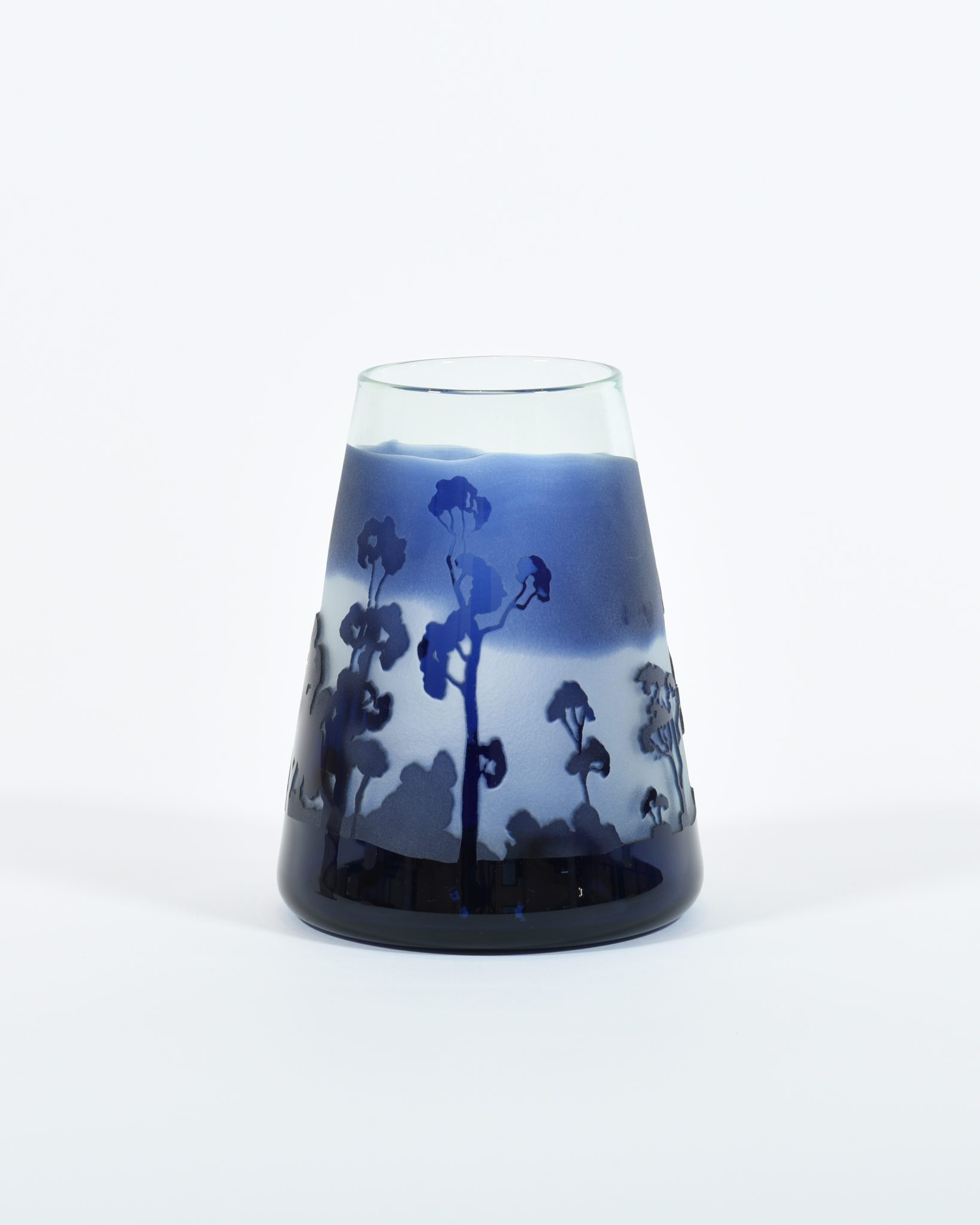Tony HANNING
1. Orange Bowl, 1995, Flashed glass with sandblasted images, 13 x 25 cm dia., Latrobe Regional Gallery Collection, purchased 1995.
2. Landscape, 1981, Sandblasted glass, 21 x 16 cm, Latrobe Regional Gallery, Victorian State Craft Collection, on loan from 2003.
Tony HANNING
Tony Hanning became well established in contemporary Australian glass and was the first of his contemporaries to employ techniques of cameo glass as a key component of his practice. The techniques of cameo glass pieces originate in Ancient Rome but returned in the 19th century, in Europe, America and Britain. The process involves layers of coloured glass, which are blown or “cased” together. The layers are then carved back, engraved and sandblasted to reveal the colours underneath, drawing similarities to linocut and woodcut printing.
Imagery in Hanning’s work is often derived from the Gippsland land-scape, from vast vegetated areas of local flora and fauna to his garden. The deep purple in Landscape creates a silhouetted depiction of Australian bushland, using layering of glass to create depth in the monochromatic image. The use of glass allows as a base for these scenes as the layers are sandblasted back, creating a luminous finish.
Other environments appear in Hanning’s work, such as urban areas and cityscapes. In Orange Bowl, a blend of suburbia and industrial landscapes are dispersed around the bowl’s inner surface. The Cubist perspective makes the composition complex and disorientating, looking down into the vortex of these objects propelled in a continuous quizzical space. Each component – a brick wall, signpost, pipes, windows, portals and blocks of architectural structures – are linked through ladders and staircases, creating a surrealist landscape.
From 1971 – 1980, Tony Hanning was Director of Latrobe Valley Arts Centre now known as Latrobe Regional Gallery. His work is represented in significant Australian and international collections.

